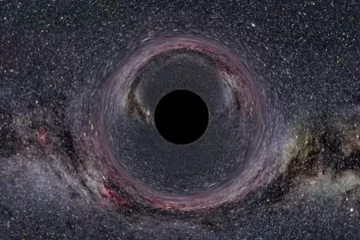The future of Earth lies watershed because of our existing practices and grounded in legacy. Scholars and instructors are required to swiftly grasp that how are our sustainability strategies can be shaped by past environmental changes? This article explores the complex interaction between historical events and future transformations, and innovative solutions are highlighted that can supervise us toward a more resilient planet. Illuminates the path forward for effective strategies for a sustainable future. Surface chemistry, the planet’s cooling rate, gravitational interactions, and increasing solar luminosity shape the future of Earth. These all process are impacted by human actions and may contribute to Holocene extinction. The mass extinctions may be caused by random celestial events and predictable geological changes, over hundreds of millions of years. Evolutionary advancement in technology will be witnessed in future. Climate variations will create alarming situations for the biodiversity. In approximately 7.5 billion years, sun may absorb our planet.

Cataclysmic Astronomical Events
The cosmic disasters may change the earth’ s life span completely or partially. It is predicted that in future, Cataclysmic astronomically events will occur and will cause extreme climate changes.
- Due to encounter of sun with wandering stars, mass extinctions may occur in future as expected in every 45 million years.
- Within 100 light years, supernova expansion may deplete the ozone layer.
- Unpredictable orbit can be created due to gravitational perturbations.
- Holocene interglacial will be long lasting (25000 years) and ice age is delayed by emissions.
- In next 250 million years; days will be expanded by 1.5 hours, as Earth’s rotation will be slowed down by moon.
- Earth will reshape due to tectonics activities; supercontinent will form by continent drift.
- The average Ocean level will be raised by 300 ft, because of Antarctica’s migration towards the north.
- The solidification of inner core may occur in next 3 – 4 billion years from now.
- Temperature of global surface will rise to 320K if solar luminosity will become 10% higher than its present value.

Climate Variations; Challenge for Biodiversity
The extreme weather patterns, rising sea levels, alteration of ecosystems will be led by ongoing impacts of climate change. The most pressing issue, we are facing is unpleasant climate variations. Global warming due to high rate of greenhouse gases emission, is led by human actions. A rise in temperature of 1.5 to 2 °C by 2100 will occur if this trend will not change and increase in luminosity of also raise the temperature.

A significant threat to Earth’s future is biodiversity loss as current species extinction rate is 1000 times larger than natural rate. This loss of biodiversity will disrupt the food webs and ecosystems are also affected. As natural habitats are destroyed by deforestation and Holocene extinction caused by human actions, resulting in biodiversity loss. For example, a decline in CO2 cause extinction in C3 plants and C3 plants will extinct its consumers. In about 800 million years, this decline will vanish multicellular life. We are going towards the closest to global catastrophic it has over been. So, we need implementation of conservation strategies. It will help us in immunity against the drastically altering global climate dynamics.
Technology and innovations
Our understanding of the universe will be revolutionized by significant scientific breakthroughs. Dramatical evaluation is expected in quantum computing, AI, and biotechnology. Everything from healthcare to space exploration will be influenced by this evaluation. Super artificial intelligence will be witnessed very soon and will surpass the human intelligence. A transition of humanity from a type 0 to a type I civilization in next 100 years, predicted by theoretical Physicists Michio Kaku, will be able to harness all energy of Earth.

The 26th century’s featuring technologies, as predicted by futurist Adrian Berry, will have ability to extend life span of human up to140 years and digital storage of personalities will be possible. A computerised immortality will be offered. Oceans will be run by human beings, traveling in space ships will be allowed for all. They will have technology to live in lunar and Martin colonies and outer space will be examined by robots. But must address the climate changes. Master clean energy and control of climate by humans is predicted by futurists. But due to political and economic obstacles, the timing of this advancements is under debates. On the other hand, a warning about existential risks was given by Stephen Hawking and also estimated that Earth will be made uncharitable due to overcrowding and consumption of energy, by 2600. We will succeed in developing a cashless society and Transactions will made digitally. Technology act as a double-edged sword in shaping the future of Earth. Technology is trying to give to innovative solutions of challenges in climate but also enhancing the problems. As Super artificial intelligence will assist us in all fields, from healthcare to space exploration but cause joblessness and social unrest.

When will Earth end?
As claimed by Doomsday that on September 28, 2024, Earth will end because of “Blood Moon Prophecy”, Reverend Efraid Rodriguez also forecasted strike of an asteroid. But, was dismissed by NASA. So, what is the approximate age of earth and when will be swallowed by Sun? It is expected that Earth will die after billion of years from now. But it will become lifeless much earlier than its end, most of organisms will disappeared in about next 1.3 billion years. Physicists approximated that after 1 billion years from, this end will happen. Because, before reaching the end, atmosphere will be vaporised and depletion of oxygen will take place due to increased solar radiations. A red giant will be formed by the sun in billion of years. When all helium of the sun will be fused into carbon then a white dwarf will be formed by collapsing of the sun. The drift of moon is 4 cm per year from the earth and it is expected that in next 50 billion years, will become tide- locked. Potentially collision with earth may occur into 65 billion years. The most probable destiny of earth is that in about7.5 billion years, sun will absorb it after its entrance into red giant phase and will extend beyond the current orbit of the planet.
Conclusion
The future of the Earth is a fascinating question for all of us. The cataclysmic Astronomical events will change the geometry and will redesign the earth. New supercontinent will be formed by the tectonics activities. The extreme weather patterns, rising sea levels, alteration of ecosystems will be led by ongoing impacts of climate change. This climate entropy will vanish the life after Billion of years. It is expected that Super artificial intelligence will surpass the human intelligence and will play main role in shaping Earth’s future. In future human will travel in space and will able to live on other planets. But in our all attempts for advancement in technology is also disturbing our natural surroundings and moving forward to the end of earth. The most probable destiny of earth is that in about7.5 billion years, sun will absorb it after its entrance into red giant phase and will extend beyond the current orbit of the planet.
By
Zeenat Mushtaque, Master of philosophy in Solid State Physics
Dr. Abid Hussain Nawaz, Ph.D. & Post Doc
Rumana Gull, Scholar Master of Philosophy Biological Sciences




I am sure that the structure of our solar is system is same as the strycture of an atom,
As atom has electrons neutrons and neuclues with protons after some time period the energy of the neucleaus is utilized and is finished up, similarly earth and other planets are revolving around the sun in same manner and one day the core of sun will loose all its ebergy and that day will be the doomsdayy, well earth has lost humanity, so why not humans, additionaly human beings will end earlier then the wnd of this earth and humanity will end earlier befor the end of bothe rear and former